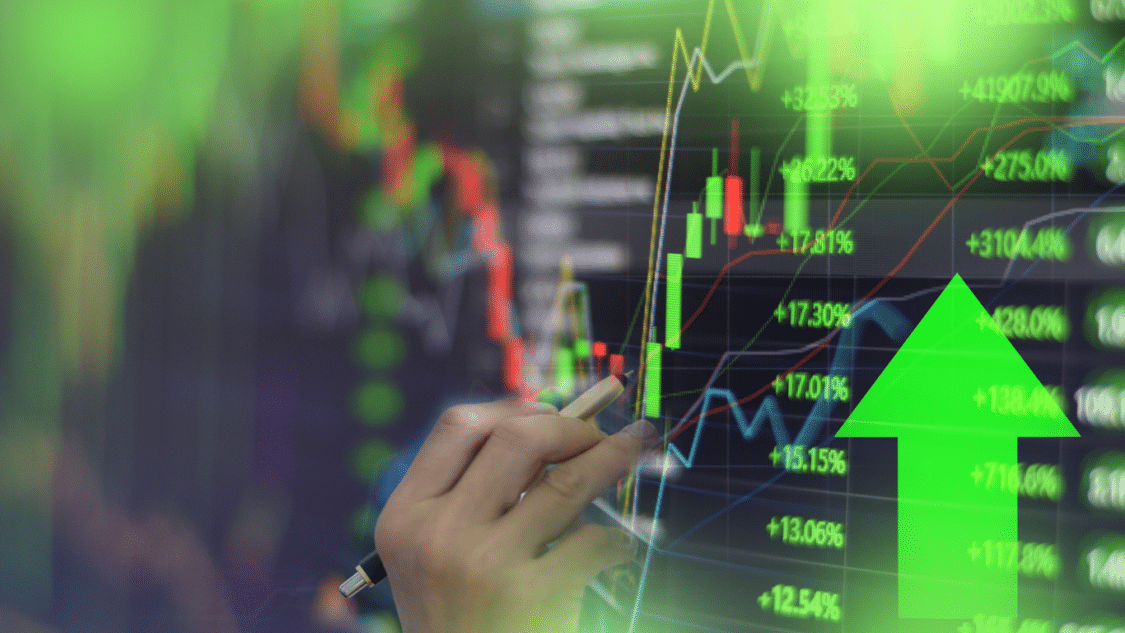The purpose of a trading line, also known as a moving average line, is to provide traders with a visual representation of the average price of an asset over time. It is used to identify an asset’s trends and potential price movements by smoothing out the fluctuations and noise in the price data.
They are commonly used in technical analysis to help traders make informed decisions about when to enter or exit a trade. By tracking the movement of a trading line, traders can gain insight into the underlying market sentiment and make more accurate predictions about future price movements. Additionally, they can be used to identify support and resistance levels, which can help traders set stop-loss and take-profit levels.
How is a trading line calculated?

The price of an item is averaged over a predetermined amount of time to produce a trading line, also known as a moving average line. The most popular moving averages are the Simple Moving Average (SMA) and the Exponential Moving Average (EMA).
The Simple Moving Average (SMA) is calculated by summing up the closing prices of an asset over a specific time frame and dividing the sum by the number of periods. For example, if you wanted to calculate a 20-day SMA, you would add up the closing prices of the asset over the last 20 days and divide by 20.
The Exponential Moving Average (EMA) is calculated by giving more weight to the more recent prices. This is achieved by applying a weight factor to each price, with more importance given to the most recent prices. The formula for calculating an EMA involves multiplying the previous period’s EMA by a smoothing factor and adding the current period’s price multiplied by the complement of the smoothing factor.
The choice of which moving average to use depends on the trader’s preference and the specific trading strategy employed. Both moving averages can be plotted on a chart as a trading line to help traders identify trends and potential price movements.
What are the different types of trading lines?
Traders use several types of trading lines, also known as moving averages, in technical analysis. The most common types are:
- Simple Moving Average (SMA): A simple moving average is calculated by adding up the closing prices of an asset over time and dividing by the number of periods. It is the most basic type of moving average.
- Exponential Moving Average (EMA): An exponential moving average is similar to a simple moving average but gives more weight to recent prices. This is done using a weighting factor emphasizing the most recent price data.
- Weighted Moving Average (WMA): A weighted moving average is similar to an exponential moving average, but differs as it assigns a weight to each data point based on its position in the data set. This means that more recent data points have a higher weight than older data points.
- Hull Moving Average (HMA): A Hull moving average is a type of weighted moving average that uses weighted moving averages and the square root of the period to create a smoother curve.
- Adaptive Moving Average (AMA): An adaptive moving average is a type of moving average that adjusts its sensitivity to price movements based on market conditions. It is designed to be more responsive to changes in volatility than other moving averages.
The choice depends on the trader’s preference and the specific trading strategy. Each type of moving average has its strengths and weaknesses, and traders may use a combination of different types to create a more robust trading system.
What are common strategies traders use with trading lines?
- Trend identification: Traders use trading lines to identify the direction of a trend. If the price of an asset is consistently above the trading line, it is considered an uptrend, and if it is below the trading line, it is regarded as a downtrend. Traders may use this information to enter or exit trades.
- Support and resistance: Trading lines can also be used to identify support and resistance levels. When the price of an asset approaches a trading line from below, it may bounce off the line, acting as support. When the price approaches from above, it may act as resistance. Traders may use this information to set stop-loss and take-profit levels.
- Crossover strategy: Traders may use two lines with different timeframes and look for a crossover. For example, if a short-term moving average (such as a 20-day SMA) crosses above a longer-term moving average (such as a 50-day SMA), it is considered a buy signal. Conversely, if the short-term moving average exceeds the longer-term moving average, it is considered a sell signal.
- Price-movement confirmation: Traders may use this to confirm the direction of price movements. For example, if the price of an asset breaks above the line, traders may wait for a pullback to the trading line before entering a long position.
- Multiple moving averages: Traders may use multiple lines with different timeframes to better understand the trend. For example, a trader may use a short-term SMA (such as a 10-day SMA) and a long-term SMA (such as a 50-day SMA) to confirm the direction of the trend.
Can it be used for all types of assets, or are they better suited for specific markets?
Trading lines, also known as moving averages, can be used for various assets and markets, including stocks, commodities, forex, and cryptocurrencies. However, its effectiveness may vary depending on the characteristics of the asset or market being analyzed.

Some assets may be more volatile than others, and the use of the line with a shorter time frame may be more appropriate to capture short-term price movements. Other assets may have longer-term trends that require using a trading line with a longer time frame.
Additionally, the success may be affected by market conditions. In highly volatile markets, they may produce a large number of false signals, leading to losses. Conversely, in stable markets, they may be more reliable and produce more accurate signals.
Traders should carefully consider the asset’s characteristics or market and choose a suitable line appropriate for their strategy and risk tolerance. Additionally, traders should always use trading lines in combination with other technical indicators and fundamental analysis to increase the accuracy of their trading decisions.
Are there any common mistakes traders make when using trading lines, and how can they avoid them?

- Over-reliance on trading lines: Traders may rely too heavily on trading lines and ignore other technical indicators or fundamental analysis. To avoid this mistake, traders should use trading lines in combination with other indicators and analysis to confirm signals and increase the accuracy of their trading decisions.
- Using the wrong time frame: Traders may use trading lines with the wrong time frame, which can lead to false signals and losses. To avoid this mistake, traders should choose an appropriate time frame for the asset or market being analyzed and their trading strategy.
- Using the wrong type of trading line: Traders may use the wrong type of trading line, such as using a simple moving average instead of an exponential moving average. To avoid this mistake, traders should research and choose the type of trading line most suitable for their strategy.
- Ignoring market conditions: Traders may ignore market conditions when using trading lines, leading to false signals and losses. To avoid this mistake, traders should consider market conditions, such as volatility and liquidity, when using trading lines and adjust their strategy accordingly.
- Not adjusting stop-loss and take-profit levels: Traders may not adjust their stop-loss and take-profit levels based on the signals generated by trading lines, leading to losses or missed opportunities. To avoid this mistake, traders should adjust their stop-loss and take-profit levels based on the signals generated by trading lines and their risk tolerance.
By avoiding these mistakes, traders can use trading lines effectively in their trading strategy and increase their chances of success in the markets.
How to Uplift Your trading using the Balance of Power Indicator in 2023?

